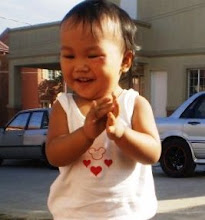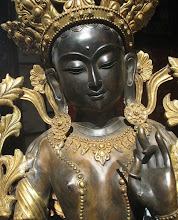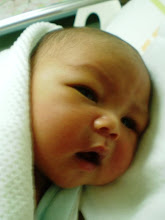“The life of the body is a tranquil heart, but envy is a cancer in the bones.”
Proverbs 14:30
PETTY felon dies from a gunshot wound. But the malignant growth that was gnawing at his innards lives on. Famished for information, such a colony of cancer cells—in couch potato mode-- feeds ravenously on a diet of trashy movies, gaining a semblance of awareness, a will to live, even a hunger to spawn children in its own hideous image. Such horror of oncology was plied in Clive Barker’s 1980s uptake on cancer, “Son of Celluloid.”
The mass of tissues mocks its doltish felon-host barely eking less than an aimless existence. It crows about its superiority as a form of life that has imbued itself with a thirst for learning and loftier ambitions. Carcinoma -- as an anomalous bit of genetic information-- stockpiles more and more information, turns into a self-aware entity and aspires to become more than Homo sapiens.
Similarly besieged from within by carcinoma colonies, the do-or-die protagonist in Norman Spinrad’s 1960s sci-fi uptake, “Carcinoma Angels” brings the battle inside his body; he mounts a no-quarters-asked-no-quarters-given assault to decimate every pernicious cell that was eating his insides.
Spinrad suggests that spontaneous remission did not correlate with any external factor. The fight against cancer must be waged--and won—within to bring healing.
As the dust of an all-out inward war had settled, kick-ass protagonist had reclaimed his own territory, emerges triumphant— conquest completed and there’s the consequent spontaneous remission.
Such far-fetched combative modes of wiping out carcinoma wouldn’t stir interest in medical circles. Too, pharmaceutical outfits—they bankroll research and development for new drugs-- have little interest in pursuing alternative cancer therapies. Alternative treatments plied out in fiction and unorthodox healing circles are generally inexpensive and cannot be patented. Drug firms can only rake in profits with a drug that can be patented.
Like equally top number deadly killer heart disease, cancer is a multidimensional malaise. That’s why it is nearly impossible to study the effects of diet, therapeutic agents, and other influences in the traditional research framework. Investigating several variables calls for dozens of experiments— and that requires gargantuan amounts of research funding.
Too, the conventional experimental tack calls for checking one substance at a time in a proverbial seeking for a needle buried in a haystack. Such a search mode-- hopefully-- may zero in on an active biochemical principle or pharmacological agent that can cure cancer.
Another drawback: too tough to design a double-blind study to find out whether combinations of various elements or components that go into natural therapies can zap carcinoma; double-blind studies are designed to pinpoint one or few therapies that work.
With his life on the line ticking and trickling away, the desperate cancer patient may, short of running amok, likely take after the bellicose mode of Spinrad’s protagonist in “Carcinoma Angels.” He carries out whatever imponderable solution it takes to extirpate hordes of malignancy within threatening metastasis for its final conquest.
ECHOING the counsel of a wise king in the Scriptures to nurture a tranquil heart and shun envy that can burrow into the marrow, a martial artist named Li Ching-yuen (1677-1933) spilled out the topmost secret to longevity: “Keep a quiet heart.”
The brutal physical regimen in any system of unarmed combat, say, karatedo (literally, “way of the empty hand”) represents the tip of the iceberg—the repetitive drills to hone the entire body’s reflexes for fighting embodies the pinky finger, the entire regimen is a full arm’s length that covers cultivation of the spirit, the emotions, an inner rhythm and the mind. Indeed, old-fashioned martial skills aim to nurture more of the psyche rather than the sinew. It is an out-and-out attitude makeover and some.
In pushing the limits of physical prowess a wee bit at a time in a self-effacing regimen, the martial arts initiate may step into the realm beyond the physical. This, after the cares and fears of the heart are hushed still—there is irony in that gaining expertise in the art of warfare, one may find peace.
Consider isshin-ryu (translates as “one heart-stream” or “one truth-stream” where the ancient character for “heart” also stands for “truth” or “reality”) a typical style of karatedo. Getting to the black belt level of skills, a learner has to go through endurance repetitions hundreds of times. Say, focused slamming of one’s fists onto a twine-wound punching pad called makawara, lashing out a dose of 100-300 kicks for each leg, including a non-stop 25-kilometer jog. Such generous doses of physical punishment look a tad close to an ascetic’s self-inflicted mortification of the flesh, or a religious penitent’s acts of atonement.
Then again, reports point to a 16-year old youth stricken with cerebral palsy—he saw action in the World Karate Championship held in Pittsburgh, U.S. from June 18-20. Srimanth Bal of Gujarat, India had to square off and win over cerebral palsy, a non-contagious condition that cause physical disability in human development.
Srimanth could not walk for eleven years; he was bound to his wheelchair and had to be force-fed. He could not walk without help. His father came to know about karate therapy and sought out for help the president All India Isshinryu Karate Association.
Recalls Srimanth’s coach: "Five years ago in 2004, we started giving him training. At that time he could not even walk. Initially, it was very difficult how to train him. But, I guided him and trained him.”
Plunging into earnest training for five years, the boy ploughed off on the path to recovery and control of his limbs. Too, he has earned the kuro obi or black belt level of skills, an arsenal of martial know-how which he plied out at a global level competition.
HEWING to the Albert Einstein assertion, “Imagination is more important than knowledge,” fictionist Norman Spinrad dumps his never-say-die cancer-stricken protagonist right into the character’s bloodstream—all 70,000 miles spanning the length and breadth of the human body; a network of highways, byways and wee ways through which carcinoma are likely ferried and pumped all-through to infest the victim. The unlikely culprit that, as Spinrad suggests, abets carcinoma to worsen into metastasis and corrupt the corpus?
The heart, it is.
There must be more than medical wisdom in King Solomon’s divine-inspired proverb: “The life of the body is a tranquil heart…”
Why, the “nin” character in ninjutsu (or art of the ninja literally translates as “heart art”) is a variant for heart and must have inspired the Brooklyn, New York-based National Children’s Leukemia Foundation to ply out Ninja Power Martial Arts Therapy— “a unique program that blends the ancient wisdom of the martial arts with the mind-body approach of modern integrative medicine."
The combative arts therapy “offers powerful messages of hope, opportunities for success and achievement, concrete techniques to manage pain and fear, the opportunity to connect with peers without feeling ‘different’, and time to feel ‘normal’ and in control. (A) child… torn down physically and psychologically by disease, rebounds with martial arts therapy, gaining control of negative emotions and rebuilding self-confidence and self-esteem.”
Children—including cancer-stricken 2-5 year-olds—drill through defensive moves in hour-long group sessions that also include meditation, visualization and breathing techniques. In meditation, children can cultivate their own intrinsic energies, becoming empowered and focused on positive outcomes.
“Breathing techniques and visualization help children conquer pain and negative emotions while physically engaging karate movements can boost children psychologically and improve balance and coordination. Learning karate improves self-confidence and self-esteem, and children quickly develop their own ‘indomitable spirit,’ cites the NCLF online prospectus.
NO food and drug regulatory body of any nation would hazard approval of curative quackery, hence, qigong— literally “breathing skills,” a soft martial art that relies on use of ki, chi, qi or life force in mortal combat—took a bad rap under the Mao Ze Dong regime in China. Qigong advocate Guo Lin cured herself of uterine cancer after 10 years of practicing such art, but the state prevented her from sharing such martial cum therapeutic know-how to other cancer sufferers—“she began teaching her method to people suffering from cancer and chronic illnesses in 1970. Her first student, a worker who suffered from serious heart disease, was cured after practicing her qigong. Her second student, a factory worker, was cured of his stomach cancer after a year of assiduous practice,” recounts author David A. Palmer in “Qigong Fever: Body, Science, and Utopia in China.”
Cites Palmer: “Between 1971 and 1977, Guo Lin was interrogated seven times by the (government authorities). In spite of the harassment, the number of people who came to practice with her grew, until she was able to train coaches to lead practice groups in other parks, and an informal organization of practitioners was created to study and publicize her (quaint anti-cancer treatment) method.”
There was no retreat no surrender for this femme fatal of a martial artist. Soon, Guo Lin had the backing of Communist Party cadres who had benefited from her method. A retired navy officer turned up as ardent supporter and took Guo Lin to several work units, looking for a permanent base for teaching and practice. By 1977, two officials at Beijing Normal University risked offering the campus as a center for Guo Lin’s tutorials.
Sensing a new political climate at the heels of Mao’s death, to the health ministry she submitted a report summarizing seven years of experience teaching qigong and claimed that it was a cure for cancer. Too, she began to organize regular, formal courses at Beijing Normal University.
“‘Experience sharing assemblies’ were also held, at which practitioners could share and summarize the benefits of the method. In a turn of events, Guo Lin was invited to lecture at dozens of universities, factories and official units. Thousands of people began to learn her qigong method in parks and public spaces around the country,” writes Palmer.
Thus, qigong blossomed as a regimen for primary health care, a mode of preemptive strike at a dreaded menace of the 21st century that zapped dead 6.7 million in 2002 and may decimate 10.3 million by 2020 to emerge as the world’s top killer.
KARATEDO as a way of life saw the light in an archipelago at the southernmost tip of Japan: Okinawa, as reports have it, “has a population of about 1.3 million, and has 55 centenarians per 100,000 people, the highest ratio in the world.”
The unarmed mode of combat was plied out by the island’s fishers and farmers who fought off sword- and spear-wielding samurai warriors centuries ago. Apart from the draconian physical regimen befitting karatedo, Okinawans have steeled themselves in the nobility of a near-Spartan lifestyle feeding on the fruits of the land and the bounties of the sea.
It would be too tough to turn up a double-blind study to figure out whatever it is in karatedo that quells carcinoma. It could be the quaint breathing techniques, the supposedly healing sounds expelled during form practice. It might be the hours of meditation and rapt absorption beneath the torrents of a waterfall, the appreciation for serene beauty manifest in nature, the explosive striking techniques, a pared-down lifestyle that celebrates frugality… that’s a kaleidoscopic assortment that can be dismissed by any food and drug agency: “No approved therapeutic claims.”
Tuesday, May 26, 2009
Subscribe to:
Posts (Atom)





.jpg)

